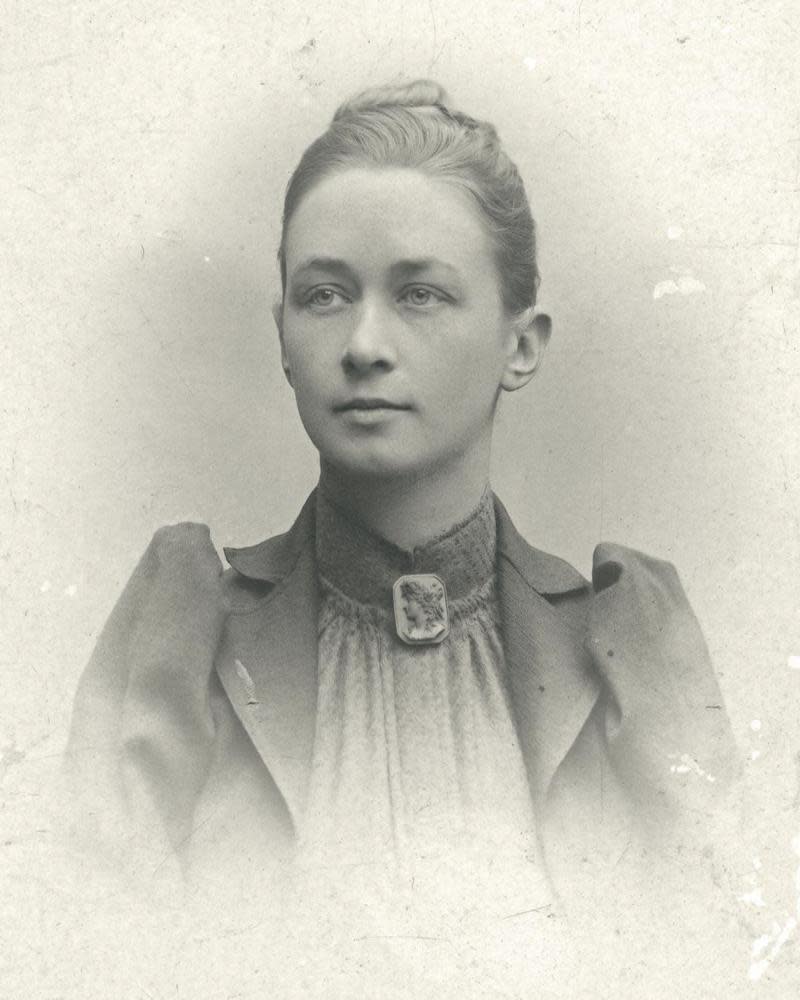Hilma af Klint: Swedish mystic hailed as the true pioneer of abstract art
Few people have heard of Hilma af Klint, let alone seen the hundreds of paintings and drawings that the 20th-century Swedish artist created. The art establishment ignored her and she barely sold a single work.

Now, almost 80 years after her death, she is the outsider who has found recognition as a visionary artist, a pioneering star of abstract art. A seven-volume study and a biography will be published this month, Tate Modern is planning a 2023 exhibition and an Oscar-nominated filmmaker has made a major movie about her, with a cast that includes Lily Cole.
As a clairvoyant and mystic, Af Klint believed that her abstracts were painted under the direction of higher spirits and that the world was not quite ready for her radical art, but she probably never foresaw such posthumous acclaim.
She developed a vocabulary of triangles, squares, circles and spirals before Wassily Kandinsky, Piet Mondrian and Kazimir Malevich declared themselves the inventors of abstraction. While Kandinsky claimed to have created the first abstract painting in 1911, Af Klint had in fact beaten him to it in 1906. Like Mondrian and Kandinsky, she died in 1944.
Interest in her work grew after a 2016 show at the Serpentine gallery in London, which transferred to the Guggenheim museum in New York, where it broke attendance records with some 600,000 visitors.
Daniel Birnbaum, who curated the Serpentine version, told the Observer: “It was the best-attended show in the history of that institution – this artist who did not show her work during her lifetime. She has forced art historians to rewrite art history. A female artist who turned out to be an abstract pioneer before Kandinsky and someone who did not have the whole entourage of collectors, museum directors, gallerists, the whole lobby that we’re so used to.”

Born in Stockholm in 1862, Af Klint studied at the Royal Academy of Fine Arts, graduating with honours in 1887, only to break away from painting conventional portraits, landscapes and botanical studies.
Birnbaum said: “It’s pretty clear that she wanted to show her work, but she didn’t get the support. The only places she showed it was in very specialised, esoteric circles.” But he believes she actually lost interest in selling: “She saw her art as a spiritual message to mankind. She had much bigger ambitions.”
She found inspiration in mysticism and spiritualism of theosophy and anthroposophy. She attended spiritual gatherings with four female friends – in a group calling themselves “The Five” – exploring spiritual realms through meditation and seances. Believing that they could communicate with mystic beings, they transcribed their messages through automatic writing and drawing, experiments that predated the surrealists by decades.
Birnbaum said that theosophy and anthroposophy “seem weird and flaky today” but they were fashionable then: “These modes of spiritual engagement were part of the zeitgeist, and popular in artistic circles across Europe, as people sought to reconcile religious beliefs with scientific advances and with a new awareness of the plurality of religions.”

He noted that she “found abstract forces in nature” and while she worked in series – it was never about individual paintings – she had an unrealised dream of building her own temple, an edifice but also perhaps an inner temple. “It all has to do with her interest in theosophy and anthroposophy… it’s meant to make visible higher truths and not the things we see with our physical eye.”
With famous artists, researching a catalogue raisonné, a definitive study of their oeuvre, is a complex task as their works are scattered worldwide. Because Af Klint barely sold anything, almost all her 1,500 paintings and drawings are in a single place, in Stockholm, kept together by a foundation set up by a family member.
Birnbaum, who has co-edited the catalogue, said: “It’s a strange thing that a foundation owns 99% of everything.” Only a tiny percentage has been seen so far.
As the former director of the Museum of Modern Art in Stockholm, he said: “If Oslo has a Munch museum, why would Stockholm not have a Hilma af Klint museum? I would hope so.”
A new biography of Hilma af Klint written by Julia Voss, a German art historian, has just been published, while a film, written and directed by the Oscar-nominated Swedish filmmaker Lasse Hallström, will be released in the UK later this month.
Titled Hilma, the film is an English-language biopic about an artist who sees the world in a different way and who embarks on “an unwavering search for the truth about humanity and the universe at a time when men made all the rules”. The director’s daughter, Tora Hallström, plays a young Hilma and Lena Olin plays an older version. Early in 2023, the film will also be available on Viaplay UK, Viaplay’s new streaming service.
Lily Cole portrays one of Hilma’s friends. Cole told the Observer: “I was delighted to participate in this production, and to explore the stories of these fascinating women ... I’m glad Hilma’s work is finally getting the recognition it deserves.”
• This article was amended on 16 October 2022 to clarify that Daniel Birnbaum curated the Serpentine exhibition of Hilma af Klint’s work, not the show at the Guggenheim as an earlier version may have implied.

 Yahoo News
Yahoo News 